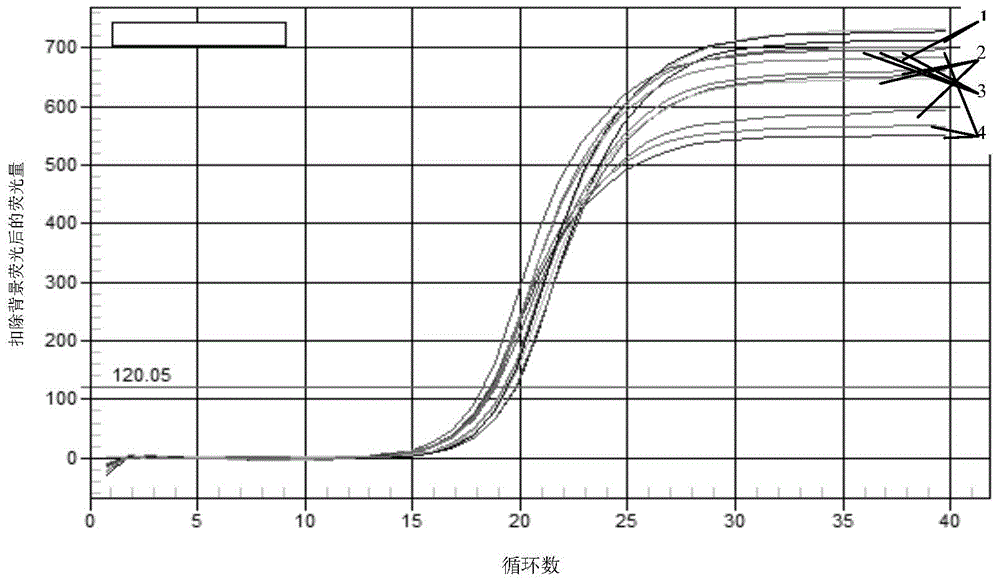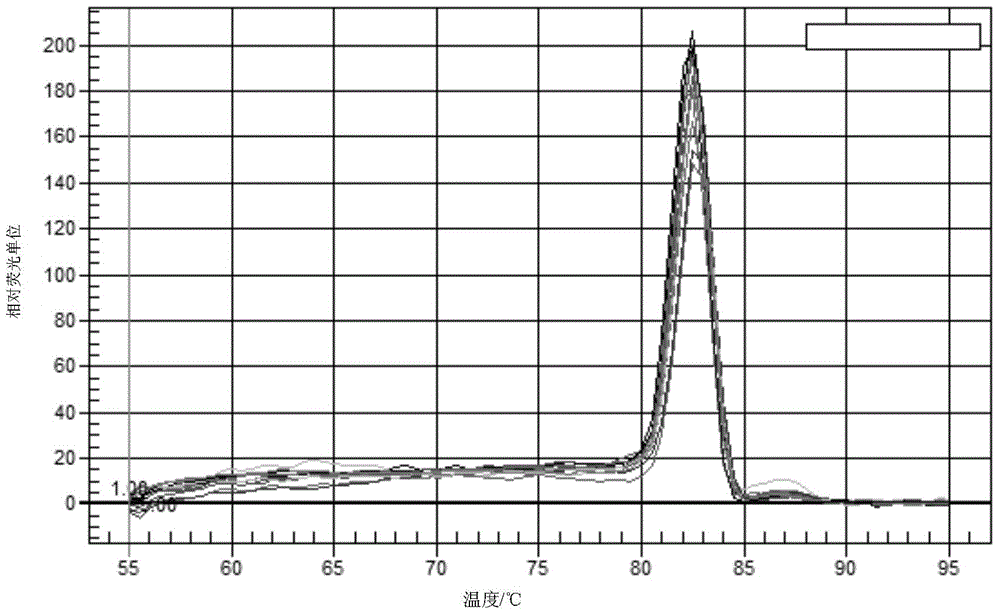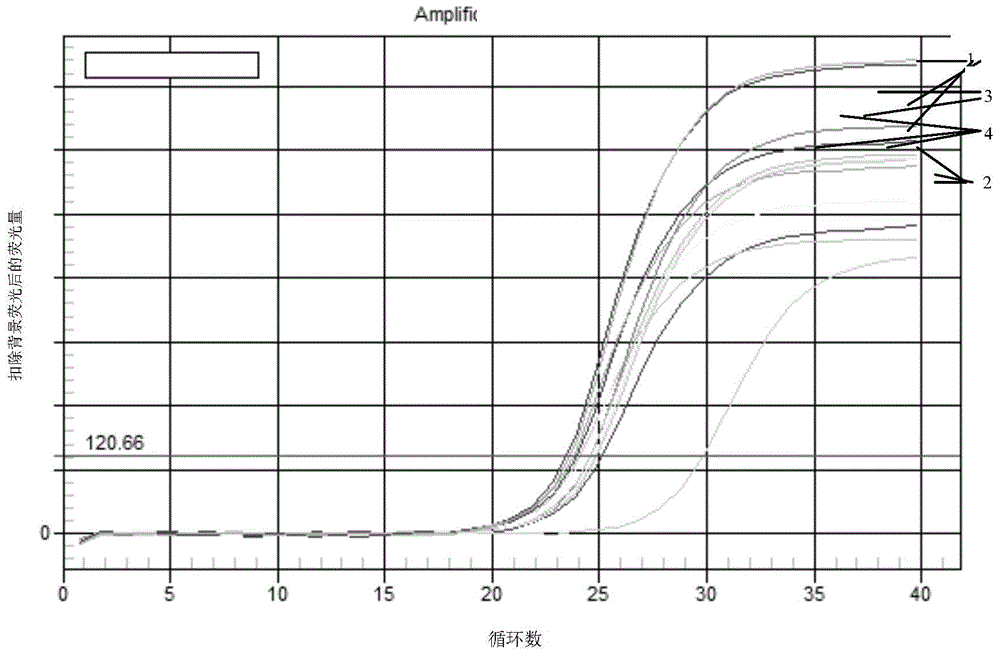Method for evaluating insect development rate by use of aldehyde dehydrogenase gene
A technology of acetaldehyde dehydrogenase and development rate, which is applied in the fields of insect molecular ecology and biotechnology, can solve the problems of large manpower and material resources, time-consuming, and evaluation contents, etc., and achieves easy purchase, simple operation and wide material sources. Effect
- Summary
- Abstract
- Description
- Claims
- Application Information
AI Technical Summary
Problems solved by technology
Method used
Image
Examples
Embodiment 1
[0085] Embodiment 1. Design and synthesis of primers for amplifying the acetaldehyde dehydrogenase gene
[0086] According to the acetaldehyde dehydrogenase gene of P. asiatica, the following primers were designed and synthesized for amplifying a partial fragment of the gene:
[0087] Upstream primer ALDH-F: 5'-AAATCCTAACCCTGAAGTTCTC-3' (SEQ ID No.1);
[0088] Downstream primer ALDH-R: 5'-ATCAGCCTTATCACCTTCTTGT-3' (SEQ ID No.2).
[0089] The nucleotide sequence of the acetaldehyde dehydrogenase gene of P. asiatica is shown in SEQ ID No.3, and the amino acid sequence of the acetaldehyde dehydrogenase gene is shown in SEQ ID No.4.
Embodiment 2
[0090] Embodiment 2, detect the growth rate of the Asian carlocust
[0091] 1. Divide Oedaleus decorus asiaticus Bei-Bienko (1941) into the following four groups according to their habitats:
[0092] Group I: Asiatic locusts in the phylloxera group;
[0093] Group II: Asiatic locust in Leymus chinensis;
[0094] Group III: Asiatic locust in Stipa cruzi;
[0095] Group IV: Asiatic locust in Artemisia fragrans;
[0096] There were 20 P. asiaticus in each group mentioned above, until the P. asiaticus died naturally.
[0097] Habitat types of the above-mentioned groups (such as Cryptospermia grassa, Leymus chinensis, Stipa cruzi and Artemisia frigidiosa) are used to investigate plant diversity, height, coverage, density, insect Habitat types classified by diversity, etc.
[0098] 2. Extracting the RNA of each group of Tesiliacus asiaticus in group I, II, III and IV respectively, and reverse transcription to obtain the cDNA of each group of asiaticus asiaticus in group I, II, ...
PUM
 Login to View More
Login to View More Abstract
Description
Claims
Application Information
 Login to View More
Login to View More - R&D
- Intellectual Property
- Life Sciences
- Materials
- Tech Scout
- Unparalleled Data Quality
- Higher Quality Content
- 60% Fewer Hallucinations
Browse by: Latest US Patents, China's latest patents, Technical Efficacy Thesaurus, Application Domain, Technology Topic, Popular Technical Reports.
© 2025 PatSnap. All rights reserved.Legal|Privacy policy|Modern Slavery Act Transparency Statement|Sitemap|About US| Contact US: help@patsnap.com



